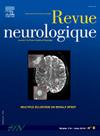脑卒中分诊Alpha抢救评分(STARS):院前基于电话的工具,用于识别脑大血管闭塞。
IF 2.3
4区 医学
Q2 CLINICAL NEUROLOGY
引用次数: 0
摘要
导言:院前识别卒中患者大血管闭塞(LVO)是优化转运到血管内血栓切除术(EVT)能力中心的关键。现有的分数需要医学或辅助医学专业知识和特定的教学。我们的目的是验证一个简单的院前电话为LVO识别评分。方法:首先,对来自紧急医疗调度中心(EMDC)登记的3452例卒中预警进行回顾性队列研究,设计卒中分诊Alpha救援评分(STARS)。分析基于手机的神经学评估、特征、最终诊断和脑成像。项目权重基于多变量分析后显著变量的比值比(ORs)。其次,调度员对前瞻性队列中所有疑似中风的患者进行STARS评估。计算受试者工作曲线(ROC)和预测性能进行外部验证。结果:在回顾性队列中,特异性和敏感性之间的最佳平衡是六个项目的组合(存在或不存在:上肢、下肢运动障碍、语言障碍、面瘫、意识障碍、吸烟)。每个项目的价值根据其各自的OR确定,得到0到13之间的总STARS,最有利的临界值高于或等于7分。然后,在2021年3月至2022年3月期间,对799次中风警报进行了STARS前瞻性评估。653例患者中有63例(9.6%)最终检出LVO。ROC下面积为0.83 [95% CI: 0.78;0.88]。STARS≥7检测LVO的准确度为0.83,灵敏度为0.65,特异性为0.85。结论:STARS是院前网络检测LVO的一种简便、准确的手机评分方法,无需具体教学。STARS正确分类了83%的卒中警报,并可用于识别符合EVT条件的LVO患者。本文章由计算机程序翻译,如有差异,请以英文原文为准。
Stroke Triage Alpha Rescue Score (STARS): Prehospital phone-based tool to identify cerebral large vessel occlusion
Introduction
Prehospital identification of stroke patients with large vessel occlusion (LVO) is crucial to optimize transport to an endovascular thrombectomy (EVT)-capable center. Existing scores require medical or paramedical expertise and specific teachings. We aimed to validate a simple prehospital phone-based score for LVO identification.
Methods
First, the Stroke Triage Alpha Rescue Score (STARS) was designed among a retrospective cohort of 3452 stroke alerts from the Emergency Medical Dispatch Centers (EMDC) registry. Phone-based neurological assessment, characteristics, final diagnosis, and brain imaging were analyzed. The items weighting was based on odds ratios (ORs) of significant variables after multivariate analysis. Secondly, STARS was assessed by dispatchers for all suspected strokes in a prospective cohort. Receiver operating curve (ROC) and predictive performances were calculated for the external validation.
Results
In the retrospective cohort, the best balance between specificity and sensitivity was obtained with a combination of six items (presence or absence of: upper, lower limbs motor deficits, language impairment, facial palsy, consciousness disorder, smoking). Each item value was determined according to their respective OR to obtain a total STARS between 0 and 13, with the most favorable cut-off higher or equal to 7 points. Then, STARS was prospectively assessed in 799 stroke alerts between March 2021 and March 2022. LVO was finally detected in 63 of 653 patients (9.6%). The area under the ROC was 0.83 [95% CI: 0.78; 0.88]. STARS ≥ 7 had 0.83 accuracy, 0.65 sensitivity, and 0.85 specificity for detecting LVO.
Conclusion
STARS is a simple and accurate phone-based score, without specific teaching, to detect LVO in prehospital network. STARS correctly classified 83% of stroke alerts and could be useful to identify patients with LVO eligible for EVT.
求助全文
通过发布文献求助,成功后即可免费获取论文全文。
去求助
来源期刊

Revue neurologique
医学-临床神经学
CiteScore
4.80
自引率
0.00%
发文量
598
审稿时长
55 days
期刊介绍:
The first issue of the Revue Neurologique, featuring an original article by Jean-Martin Charcot, was published on February 28th, 1893. Six years later, the French Society of Neurology (SFN) adopted this journal as its official publication in the year of its foundation, 1899.
The Revue Neurologique was published throughout the 20th century without interruption and is indexed in all international databases (including Current Contents, Pubmed, Scopus). Ten annual issues provide original peer-reviewed clinical and research articles, and review articles giving up-to-date insights in all areas of neurology. The Revue Neurologique also publishes guidelines and recommendations.
The Revue Neurologique publishes original articles, brief reports, general reviews, editorials, and letters to the editor as well as correspondence concerning articles previously published in the journal in the correspondence column.
 求助内容:
求助内容: 应助结果提醒方式:
应助结果提醒方式:


